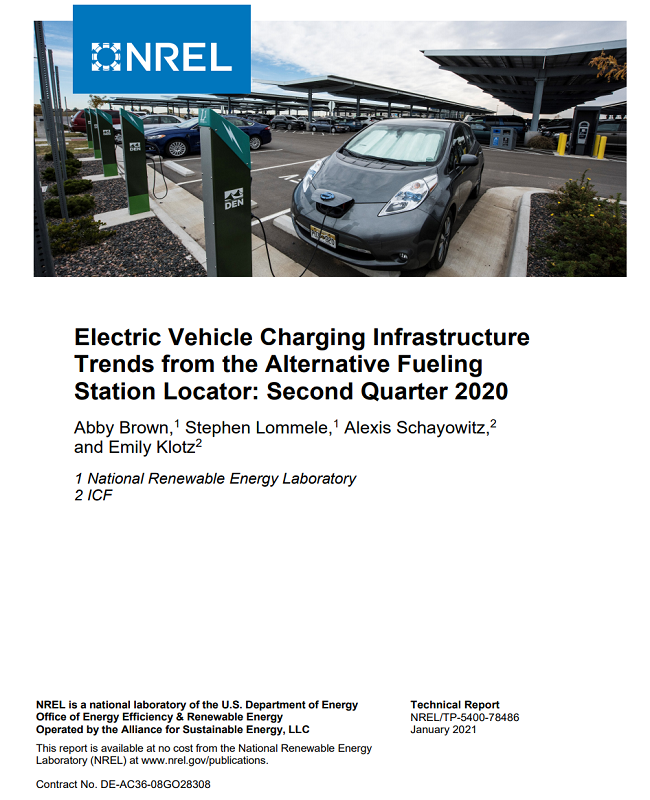The U.S. Department of Energy’s (DOE’s) Alternative Fueling Station Locator contains information on public and private non-residential alternative fueling stations in the United States and Canada and currently tracks ethanol (E85), biodiesel, compressed natural gas, electric vehicle (EV) charging, hydrogen, liquefied natural gas, and propane stations. Of these fuels, EV charging continues to experience rapidly changing technology and growing infrastructure. This report provides a snapshot of the state of EV charging infrastructure in the United States in the second calendar quarter of 2020 (Q2). Additionally, this report measures the current state of charging infrastructure compared with the amount projected to meet charging demand by 2030. This information is intended to help transportation planners, policymakers, researchers, infrastructure developers, and others understand the rapidly changing landscape for EV charging.
In Q2, all categories of electric vehicle supply equipment (EVSE) grew, except for public Level 1 EVSE, which decreased by 1.1%. Overall, there was a 3.4% increase in the number of EVSE in the Station Locator. The majority of EVSE in the Station Locator are Level 2, though directcurrent (DC) fast charger EVSE grew by the largest percentage in Q2. The South Central region had the largest increase in public charging infrastructure in Q2, though California continues to lead the country in the number of available public EVSE.
Preview the report here:
More About this Resource
Publisher: National Renewable Energy Laboratory
Date: January 29, 2021
Type: Research Reports
Countries: Canada, United States
States: None

